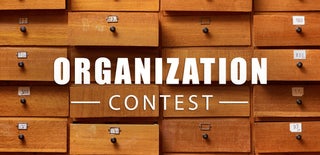Introduction: Designing a Parametric Parametric "Print in Place" Hinged Container
Step 1: Dimensioning.
The model design starts with dimensioning, and I recommend starting with the values shown in the video.
Step 2: Base.
In this step, the outside perimeter of the base is defined as a series of lines using the dimensions Width and Depth (note that a rectangle was not used in this step since when the outside 4mm corner fillets are added, the rectangle constraints are removed causing the model to fail). The base wall thickness is defined towards the base interior using the Thickness dimension. Finally, the base is extruded.
Step 3: Base Hinge.
In this step, the sketch and extrusion for the base hinge are created. Note the hinge center line is (Height / 2) above the X axis.
Step 4: Base Hinge Ball.
In this step, the sketch and revolve for the base hinge ball joints are created.
Step 5: Lid.
In this step, the inside perimeter of the lid is defined as a series of lines using the dimensions Width, Depth and Tolerance (note that a rectangle was not used in this step since when the outside 4mm corner fillets are added, the rectangle constraints are removed causing the model to fail). The lid wall thickness is defined towards the lid exterior using the Thickness dimension. Finally, the lid is extruded.
Step 6: Lid Hinge Sockets.
In this step, the sketch and revolve for the lid hinge sockets are created.
Step 7: Lid to Lid Hinge Sockets Connection.
In this step, the sketch and extrusions for the lid to lid hinge sockets are created.
Step 8: Final Touches.
In this final step, color, joint, joint limits and animation of the lid are created.
And that is how I created Designing a Parametric "Print in Place" Hinged Container Using Autodesk Fusion 360.
Hope you enjoyed it!
UPDATE:
I forgot to include the ball latch that holds the lid in place when the container is closed in the first .f3d upload, so I've uploaded a new file "Print In Place Parametric Hinged Container v1.f3d" that includes this feature, as well as labels for the sketches for easier editing.
Also, if you wish to print the small hinged box as modeled, I've added the files "Base.stl" and "Lid.stl", and a photograph of a print in place result, with breakaway supports, on an Ultimaker 3 Extended.
END OF UPDATE.

Participated in the
Organization Contest















